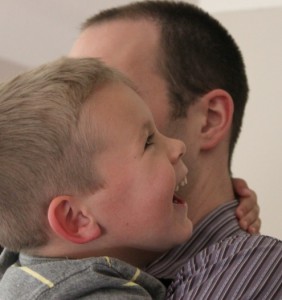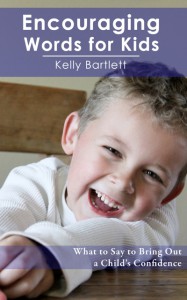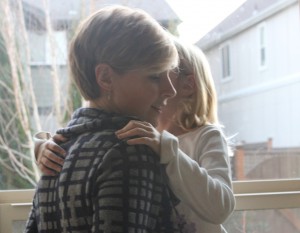 It’s no secret that kids need encouragement to thrive. But what exactly does encouragement sound like? It’s different than praise or admiration or guidance. It is common to want to give evaluative feedback to kids for their work (“Good coloring!”), or to tell them what we like about their accomplishments (“I like how you set the table.”), or what we expect of their behavior. (“You need to try your best at school today.”) Though these kinds of responses are well meaning, they teach kids to rely on our evaluations rather than to learn to form their own judgments about behavior.
It’s no secret that kids need encouragement to thrive. But what exactly does encouragement sound like? It’s different than praise or admiration or guidance. It is common to want to give evaluative feedback to kids for their work (“Good coloring!”), or to tell them what we like about their accomplishments (“I like how you set the table.”), or what we expect of their behavior. (“You need to try your best at school today.”) Though these kinds of responses are well meaning, they teach kids to rely on our evaluations rather than to learn to form their own judgments about behavior.
Alfie Kohn, researcher and author of Punished by Rewards, says that kids can come to depend on praise and external validation instead of finding satisfaction in doing the right thing simply because it’s the right thing to do. “Rather than bolstering a child’s self-esteem, praise may increase kids’ dependence on us. It leads them to measure their worth in terms of what will lead us to smile and dole out some more approval,” says Kohn. He recommends that parents focus on supporting and encouraging their child’s efforts, rather than on praising the results.
Encouragement is about teaching kids to see the value of their own accomplishments and to be in charge of their own success. It fosters internal strength and motivation by keeping the focus of children’s behavior on themselves instead of anyone else. As psychologist Rudolf Dreikurs said, “A child needs encouragement like a plant needs water.” Here are five encouraging things to say to your kids on a regular basis:
“Thank you!”
For tasks that a child has completed, let him know his efforts are appreciated. Tell him, “That helped a lot,” and, “I appreciate the time you spent on this.” It lets him know that his work is meaningful and he is an important contributor to the family. Saying ‘thank you’ is no less celebratory than saying ‘good job.’ Expressing gratitude for a job well done still communicates excitement and pride. The difference is you don’t need to tell your child that what he did was good; he will inherently feel it.
Use this kind of encouragement for when a child has achieved a goal or milestone. Cheer for her by focusing on the effort it took to get there, rather than on the outcome. Instead of saying, “I like how you built that Lego tower,” respond with, “Wow you worked hard on that!”, “Look at what you accomplished!”, or, “You must feel proud.” Responses like these focus the accomplishment on the child’s inner work, rather than on a parent’s external evaluation. It’s much more encouraging to say, “You sure never gave up during your game!” than, “You won your game, good job.”
“It’s OK to cry.”
It’s important for kids to know that their feelings are always OK. Learning how to manage these feelings takes support, acceptance, and lots of practice. Encourage kids by communicating that they are not wrong to experience unpleasant feelings like sadness, anger, or fear. Instead of saying, “You’re OK. Don’t be upset,” let your child know, “You have the right to feel angry. I understand; I would feel mad, too.” Or, “I can see you feel very sad right now, and that’s OK.” Validating your child’s feelings leads to his own acceptance of them, and the realization that he is capable of handling them.
What could be more encouraging than to know someone is receptive to what you have to say? Active listening validates a child’s sense of significance and belonging in the family; they know they’re important and they matter. Let kids know you’re taking their thoughts seriously by echoing their statements back to them. There should be some back-and-forth with open-ended questions (“What would you do about that?”), empathy (“Wow, you must have felt scared.”), and reflections (“Oh, you decided to take a break so you could calm down.”) Good listening sounds more like a conversation than a one-sided monologue. When a child is heard, she feels known.
“I trust you.”
Instead of providing the answers and directing kids toward what to do, encourage them to make decisions and solve problems by letting them know you trust their ability to decide for themselves. Say things like, “I know you can figure this out,” “I have faith in you to find a solution,” “I know you’ll make an appropriate decision,” or “You lead the way on this.” Entrusting kids to make their own decisions is very empowering for young children! It shifts the dynamic from a parent’s control over a child to one of shared control. It encourages kids to think through problems and come up with their own solutions.
 Remember that by opting for encouragement over praise, you’re not ignoring your kids’ accomplishments or successes. Encouragement is simply about keeping your response focused on their efforts and feelings as opposed to only the outcomes. Encouraging words not only reassure kids during times of success (“Wow, that took a lot of concentration!”), but also in times of disappointment (“I have faith in you to fix this mistake.”). Instead of looking to a parent for affirmation, kids are able to decide how they feel about themselves. Their failures and successes, as they should be, are about them, not anyone else.
Remember that by opting for encouragement over praise, you’re not ignoring your kids’ accomplishments or successes. Encouragement is simply about keeping your response focused on their efforts and feelings as opposed to only the outcomes. Encouraging words not only reassure kids during times of success (“Wow, that took a lot of concentration!”), but also in times of disappointment (“I have faith in you to fix this mistake.”). Instead of looking to a parent for affirmation, kids are able to decide how they feel about themselves. Their failures and successes, as they should be, are about them, not anyone else.
Kelly Bartlett is the author of Encouraging Words For Kids, a new ebook with over 150 examples of things to say to inspire a child’s confidence.








